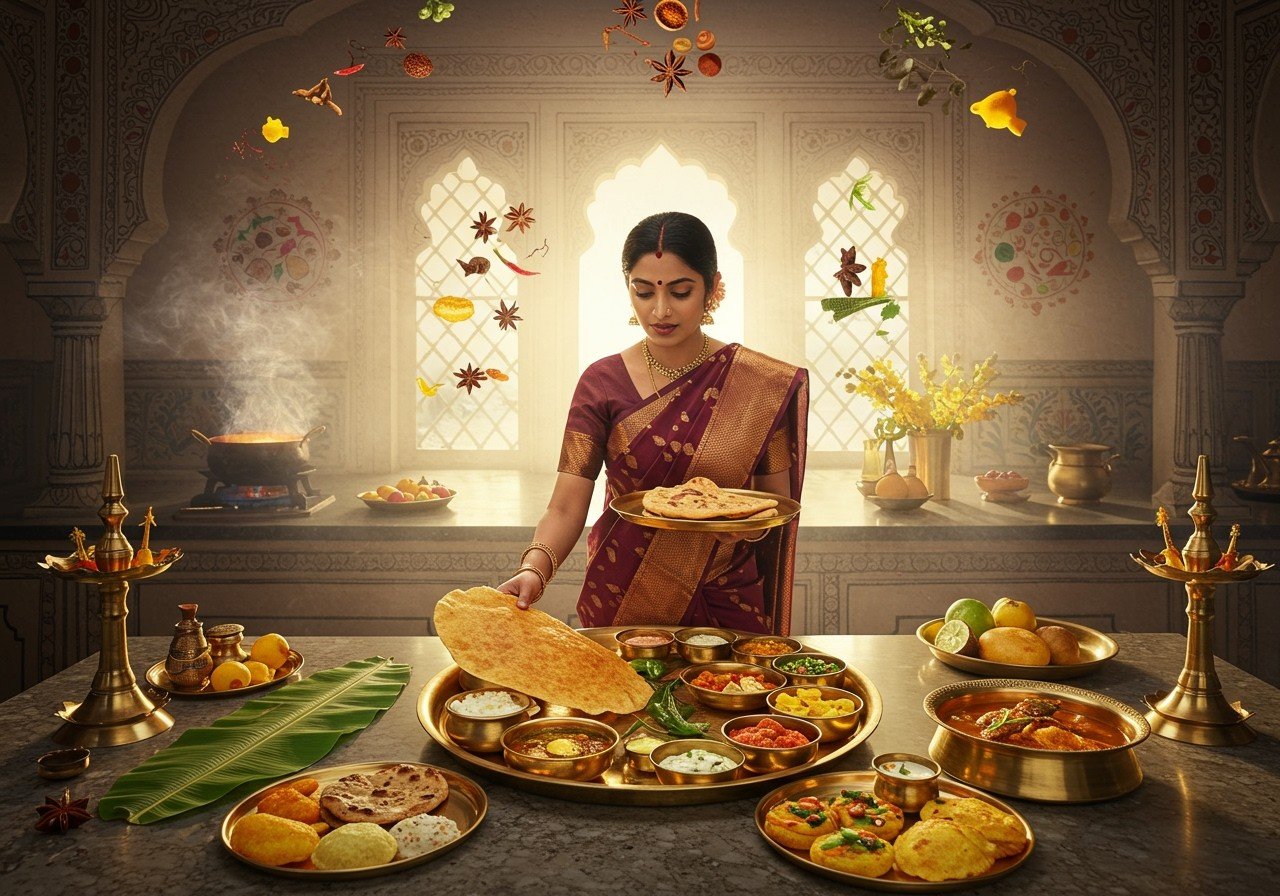
Indian cuisine is renowned for its incredible diversity and complexity, deeply rooted in the country’s rich cultural and religious traditions. Hindu cuisine, in particular, reflects the vibrant tapestry of India’s regions, each with its own unique culinary practices and flavors. This exploration delves into the cultural significance of these culinary practices and highlights the regional variations shaped by historical and religious influences.
North Indian Culinary Delights
North Indian cuisine is celebrated for its hearty and flavorful dishes. Wheat takes center stage, forming the foundation of staples like roti, naan, and paratha. The Mughal influence is evident in the rich, aromatic gravies and fragrant biryanis that grace North Indian tables. Dairy products, such as milk, ghee (clarified butter), and paneer (Indian cottage cheese), play an essential role in the region’s cooking, adding richness and depth of flavor. A blend of warm spices, including garam masala (a mix of cinnamon, cardamom, cloves, and nutmeg), cumin, coriander, and amchoor (dried mango powder) creates the distinctive flavor profiles found in iconic dishes like Butter Chicken, Rogan Josh, Palak Paneer, and Chole. Street food, a vibrant part of North Indian culinary culture, offers tempting treats like samosas, kachori, and chaat. A cup of masala chai (spiced milk tea) often concludes the meal, providing a warm and comforting finish.
- Explore a wide variety of green mung dal at Poojn.in, perfect for preparing delicious dal dishes that complement North Indian cuisine.
- Enhance your culinary experience with high-quality supari (areca nut), traditionally enjoyed after meals in many parts of North India.
South Indian Culinary Gems
South Indian cuisine is characterized by its vibrant and diverse offerings, where rice and lentils reign supreme. The coastal geography of the region contributes to the abundance of seafood and coconut, which feature prominently in many dishes. From crispy dosas and fluffy idlis to flavorful sambar and tangy rasam, South Indian cuisine offers a wide array of culinary experiences. Coconut milk, chutneys, and pickles add layers of taste and texture to the meals. Spices like curry leaves, mustard seeds, black pepper, and tamarind contribute to the lighter, more subtle flavors that define South Indian food. Regional variations abound, from the spicy Chettinad cuisine to the mild, coconut-rich dishes of Kerala. Festivals like Pongal and Onam showcase the region’s rich culinary heritage with celebratory feasts.
East Indian Culinary Treasures
East Indian cuisine is known for its subtle yet flavorful dishes, with rice and fish as staples. Bengali cuisine, in particular, stands out for its use of mustard oil and mustard seeds, which lend a distinctive pungency to dishes like Machher Jhol (fish curry). Sweets, such as rasgulla and sandesh, hold cultural significance and are often enjoyed during festivals. The region embraces both vegetarian and non-vegetarian culinary traditions, reflecting the diverse dietary practices of its people. Seasonal ingredients and spice blends like panch phoron (a five-spice mix) contribute to the unique flavors that define East Indian cuisine. Durga Puja, a major festival in the region, significantly influences the food culture, with elaborate meals prepared as offerings and for communal feasts.
West Indian Culinary Adventures
West India presents a diverse culinary landscape, ranging from the spicy curries of Maharashtra to the sweet and savory flavors of Gujarat. Vegetarianism holds a prominent place in Gujarati cuisine, which features dishes like dhokla and thepla, often with a hint of sweetness. Rajasthani cuisine, with its rich and spicy flavors, offers hearty dishes like Dal Baati Churma. The coastal regions of Konkan and Goa showcase the influence of the sea, with seafood and coconut featuring prominently in their culinary traditions. Festivals like Ganesh Chaturthi add a special dimension to the food culture, with unique regional delicacies prepared for celebrations.
Central Indian Culinary Heritage
Central Indian cuisine, often overshadowed by its more prominent neighbors, is a treasure trove of unique flavors and culinary traditions. Millet-based dishes like bhutte ka kees and chila are common, reflecting the region’s agricultural heritage. Tribal cuisines incorporate wild herbs and foraged ingredients, giving them a distinct taste. The influence of Mughlai cuisine can be seen in dishes like kebabs and kormas. Local festivals, such as Bhagoria, play a role in shaping the food traditions, with special dishes prepared for these celebrations. Traditional cooking methods, often passed down through generations, help preserve the authentic tastes and textures of Central Indian cuisine.
Indian cuisine’s diversity is a testament to the country’s rich cultural tapestry, with each dish telling a story of heritage, tradition, and regional influences. As you savor the diverse flavors of Hindu cuisine, you embark on a culinary journey that celebrates the essence of India itself.
Learn more about Prasad recipes


